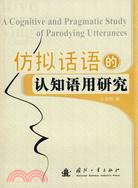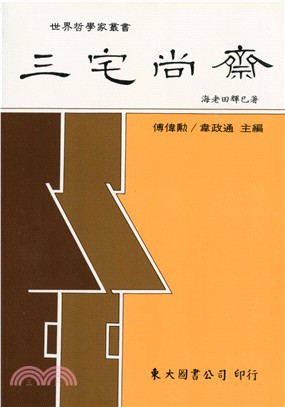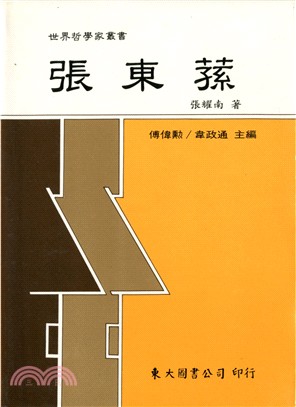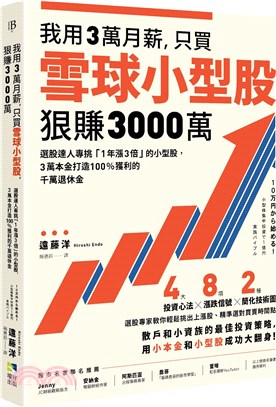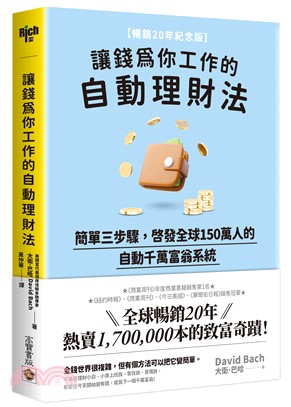相關商品
商品簡介
作者簡介
目次
商品簡介
本書運用語用學和認知語言學的理論和觀點對仿擬話語進行專題研究。全書共8章,以仿擬話語認知語用模式為出發點,對仿擬話語的生成過程即發話言行和示意言行進行了系統的認知語用分析,為仿擬話語研究提供了一個嶄新的視角,同時也為二語/外語的話語教學提供了新的啟示,對國內外從事語言學研究的專家學者具有一定的參考價值和借鑒作用。 本書可供英語教師、研究生、語言學研究者閱讀,也可供廣大英語學習者參考。
作者簡介
么孝穎,女,博士,研究方向為認知語言學、語用學和社會語言學。現為上海電力學院直屬外語系副教授。先后在外語類期刊上發表學術論文20余篇。
目次
Chapter 1 Introduction
1.1 The research topic
1.2 A cognitive and pragmatic approach
1.2.1 Linguistic outlook of cognitive linguistics
1.2.2 Pragmatic outlook on language and meaning
1.2.3 Common assumptions in a cognitive and pragmatic approach
1.3 Methodology and data
1.4 Organization of the book
Chapter 2 Previous Researches on Parodying Utterances
2.1 Rhetorical and pragmatic study of parody
2.1.1 The basic conceptual elements in the usage of parody
2.1.2 Classification of parody
2.1.3 Structure and features of parody
2.1.4 The pragmatic functions of parody
2.1.5 The pragmatic relationship between PGUs and PDUs
2.2 Text-linguistic study of parody
2.2.1 Bakhtin' s dialogic view of parody
2.2.2 Intertextual study of parody
2.3 Cognitive study of parody
2.3.1 Prototype and parody
2.3.2 Relevance theory and parody
2.3.3 Figure/Ground theory and parody
2.3.4 Mental space theory and parody
2.4 Summary
Chapter 3 A Cognitive and Pragmatic Framework for Parodying Utterance Study
3.1 Theoretical foundations
3.1.1 Speech act theory
3.1.2 Symbolic thesis
3.1.3 Conceptual blending theory
3.2 A proposed framework for parodying utterances analysis
3.2.1 Parodying utterances : speech acts
3.2.2 Classifying parodying utterances
3.2.3 Linguistic blending analysis of parodying utterances
3.2. d A cognitive and pragmatic framework for parodying utterance analysis
3.3 Specific illustrations to the framework
3.3.1 Locutionary act : linguistic blending analysis of parodying utterance
3.3.2 Illocutionary act : pragmatic analysis of parodying utterance
Chapter 4 Parodying Utterances with Similar C-SS and GLS
4.1 Linguistic blending operation
4.1.1 Blending characterization of Input 1
4.1.2 Blending characterization of Input 2
4.1.3 Blending of Input 1 and Input 2
4.2 Blending conditions
4.2.1 Similar conceptual structure
4.2.2 Pragmatic appropriateness
4.3 Blending principles
4.3.1 Maximized motivation for similarity in C-SS and GLS
4.3.2 Maximized motivation for conceptual-semantic coherence
4.3.3 Maximized mot
4.4.1 Radial and hierarchical distribution
4.4.2 Structural stability
4.4.3 Flexible expression
4.5 Pragmatic force of resulting parodying utterances
4.6 Summary
Chapter 5 Parodying Utterances with Shifted C-SS and GLS
5.1 Linguistic blending operation
5.1.1 Blending characterization of Input 1
5.1.2 Blending characterization of Input 2
5.1.3 Blending of Input 1 and Input 2
5.2 Blending conditions
5.2.1 A shifted frame
5.2.2 The similar conceptual structure
5.2.3 The same semantic field
5.3 Blending principles
5.3.1 Maximized motivation for similarity in C-SS and GLS
5.3.2 Maximized motivation for semantic coherence
5.3.3 Maximized motivation for pragmatic coherence
5.4 Features of resulting parodying utterances
5.4.1 Context-unique
5.4.2 Structural difference
5.4.3 Non-flexible expression
5.5 Pragmatic force of resulting parodying utterances
5.5.1 Colliding
5.5.2 Uneolliding
5.6 Summary
Chapter 6 Parodying Utterances with Similar PS
6.1 Linguistic blending operation
6.1.1 Blending characterization of Input 1
6.1.2 Blending characterization of Input 2
6.1.3 Blending of Input 1 and Input 2
6.2 Blending conditions
6.2.1 Correlated conceptual structure
6.2.2 Similar phonological structure
6.2.3 Pragmatic appropriateness
6.3 Blending principles
6.3.1 Maximized motivation for phonological similarity
6.3.2 Maximized motivation for pragmatic coherence
6.4 Features of resulting parodying utterances
6.4.1 Radial and hierarchical distribution
6.4.2 Stable phonological structure
6.4.3 Flexible expression
6.5 Pragmatic force of resulting parodying utterances
6.5.1 Colliding
6.5.2 Uneolliding
6.6 Summary
Chapter 7 Parodying Utterances with Similar GS
7.1 Linguistic blending operation
7.1.1 Blending characterization of Input 1
7.1.2 Blending characterization of Input 2
7.1.3 Blending of Input 1 and Input 2
7.2 Blending condition: borrowed conceptual element as a
parodied target
7.3 Blending principles
7.3.1 Maximized motivation for graphic similarity
7.3.2 Maximized motivation for pragmatic coherence
7.4 Features of resulting parodying words
7.4.1 Easy recognition
7.4.2 Embodying communicative intention
7.5 Pragmatic force of resulting parodying utterances
7.5.1 Pragmatic force in a marked way
7.5.2 Compatible pragmatic force
7.6 Summary
Chapter 8 Conclusion
8.1 Major findings
8.2 Implications
8.3 Suggestions for future research
Bibliography
1.1 The research topic
1.2 A cognitive and pragmatic approach
1.2.1 Linguistic outlook of cognitive linguistics
1.2.2 Pragmatic outlook on language and meaning
1.2.3 Common assumptions in a cognitive and pragmatic approach
1.3 Methodology and data
1.4 Organization of the book
Chapter 2 Previous Researches on Parodying Utterances
2.1 Rhetorical and pragmatic study of parody
2.1.1 The basic conceptual elements in the usage of parody
2.1.2 Classification of parody
2.1.3 Structure and features of parody
2.1.4 The pragmatic functions of parody
2.1.5 The pragmatic relationship between PGUs and PDUs
2.2 Text-linguistic study of parody
2.2.1 Bakhtin' s dialogic view of parody
2.2.2 Intertextual study of parody
2.3 Cognitive study of parody
2.3.1 Prototype and parody
2.3.2 Relevance theory and parody
2.3.3 Figure/Ground theory and parody
2.3.4 Mental space theory and parody
2.4 Summary
Chapter 3 A Cognitive and Pragmatic Framework for Parodying Utterance Study
3.1 Theoretical foundations
3.1.1 Speech act theory
3.1.2 Symbolic thesis
3.1.3 Conceptual blending theory
3.2 A proposed framework for parodying utterances analysis
3.2.1 Parodying utterances : speech acts
3.2.2 Classifying parodying utterances
3.2.3 Linguistic blending analysis of parodying utterances
3.2. d A cognitive and pragmatic framework for parodying utterance analysis
3.3 Specific illustrations to the framework
3.3.1 Locutionary act : linguistic blending analysis of parodying utterance
3.3.2 Illocutionary act : pragmatic analysis of parodying utterance
Chapter 4 Parodying Utterances with Similar C-SS and GLS
4.1 Linguistic blending operation
4.1.1 Blending characterization of Input 1
4.1.2 Blending characterization of Input 2
4.1.3 Blending of Input 1 and Input 2
4.2 Blending conditions
4.2.1 Similar conceptual structure
4.2.2 Pragmatic appropriateness
4.3 Blending principles
4.3.1 Maximized motivation for similarity in C-SS and GLS
4.3.2 Maximized motivation for conceptual-semantic coherence
4.3.3 Maximized mot
4.4.1 Radial and hierarchical distribution
4.4.2 Structural stability
4.4.3 Flexible expression
4.5 Pragmatic force of resulting parodying utterances
4.6 Summary
Chapter 5 Parodying Utterances with Shifted C-SS and GLS
5.1 Linguistic blending operation
5.1.1 Blending characterization of Input 1
5.1.2 Blending characterization of Input 2
5.1.3 Blending of Input 1 and Input 2
5.2 Blending conditions
5.2.1 A shifted frame
5.2.2 The similar conceptual structure
5.2.3 The same semantic field
5.3 Blending principles
5.3.1 Maximized motivation for similarity in C-SS and GLS
5.3.2 Maximized motivation for semantic coherence
5.3.3 Maximized motivation for pragmatic coherence
5.4 Features of resulting parodying utterances
5.4.1 Context-unique
5.4.2 Structural difference
5.4.3 Non-flexible expression
5.5 Pragmatic force of resulting parodying utterances
5.5.1 Colliding
5.5.2 Uneolliding
5.6 Summary
Chapter 6 Parodying Utterances with Similar PS
6.1 Linguistic blending operation
6.1.1 Blending characterization of Input 1
6.1.2 Blending characterization of Input 2
6.1.3 Blending of Input 1 and Input 2
6.2 Blending conditions
6.2.1 Correlated conceptual structure
6.2.2 Similar phonological structure
6.2.3 Pragmatic appropriateness
6.3 Blending principles
6.3.1 Maximized motivation for phonological similarity
6.3.2 Maximized motivation for pragmatic coherence
6.4 Features of resulting parodying utterances
6.4.1 Radial and hierarchical distribution
6.4.2 Stable phonological structure
6.4.3 Flexible expression
6.5 Pragmatic force of resulting parodying utterances
6.5.1 Colliding
6.5.2 Uneolliding
6.6 Summary
Chapter 7 Parodying Utterances with Similar GS
7.1 Linguistic blending operation
7.1.1 Blending characterization of Input 1
7.1.2 Blending characterization of Input 2
7.1.3 Blending of Input 1 and Input 2
7.2 Blending condition: borrowed conceptual element as a
parodied target
7.3 Blending principles
7.3.1 Maximized motivation for graphic similarity
7.3.2 Maximized motivation for pragmatic coherence
7.4 Features of resulting parodying words
7.4.1 Easy recognition
7.4.2 Embodying communicative intention
7.5 Pragmatic force of resulting parodying utterances
7.5.1 Pragmatic force in a marked way
7.5.2 Compatible pragmatic force
7.6 Summary
Chapter 8 Conclusion
8.1 Major findings
8.2 Implications
8.3 Suggestions for future research
Bibliography
主題書展
更多
主題書展
更多書展本週66折
您曾經瀏覽過的商品
購物須知
大陸出版品因裝訂品質及貨運條件與台灣出版品落差甚大,除封面破損、內頁脫落等較嚴重的狀態,其餘商品將正常出貨。
特別提醒:部分書籍附贈之內容(如音頻mp3或影片dvd等)已無實體光碟提供,需以QR CODE 連結至當地網站註冊“並通過驗證程序”,方可下載使用。
無現貨庫存之簡體書,將向海外調貨:
海外有庫存之書籍,等候約45個工作天;
海外無庫存之書籍,平均作業時間約60個工作天,然不保證確定可調到貨,尚請見諒。
為了保護您的權益,「三民網路書店」提供會員七日商品鑑賞期(收到商品為起始日)。
若要辦理退貨,請在商品鑑賞期內寄回,且商品必須是全新狀態與完整包裝(商品、附件、發票、隨貨贈品等)否則恕不接受退貨。




